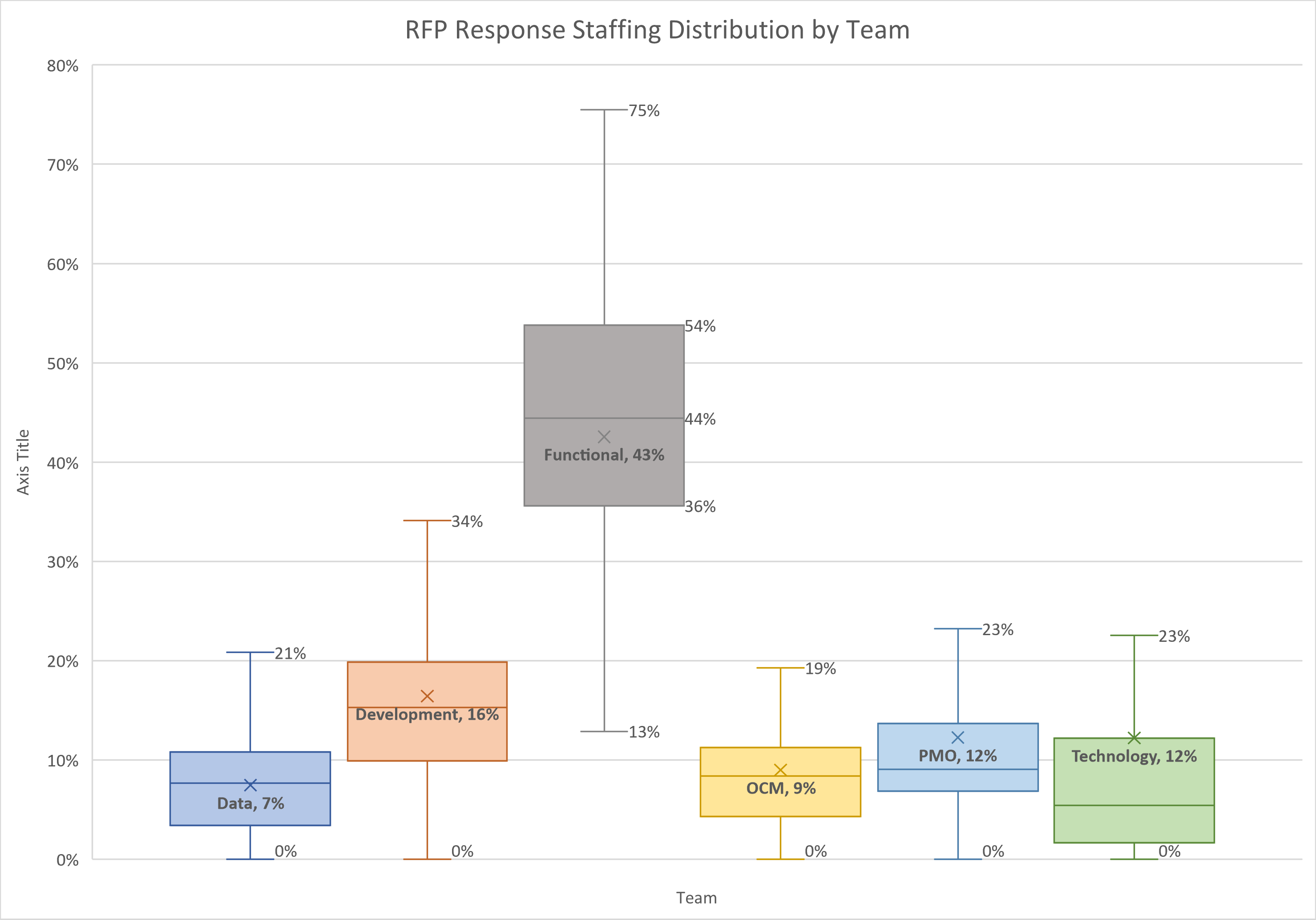- Christine Costa
- Reading Time: 3 minutes

Is your System Integrator (SI) getting it right for your data transformation? The data says…maybe not.
Business transformation efforts are inherently risky – and your data is not immune. Underestimating the amount of work that needs to be done on your data for a large transformation project can potentially result in costly delays and dreaded change orders. In fact, data is often a source of pain in transformation programs. Fortunately, with the right preparation and planning, it does not have to be.
There Is Not Enough Focus on Data
We help companies maximize the value they receive from their key IT partners and mitigate transformation risks. As part of that process, we have reviewed hundreds of RFPs and have built a database with over 43 billion dollars and 406 million hours of staffing models assessed. This market intelligence gives us insight into how much effort SIs put into various aspects of digital transformation projects.
Our analysis of RFP responses collected in 2023 shows that SIs typically allot 8% of total program hours to data transformation (as shown below). This represents a decrease to the average time allotted to data over the last two years (10% in 2021).

Given that data is where we often see timeline and budget overruns, 8% is likely not enough. While every program is different, avoiding some common mistakes will allow you to mitigate the risks data might pose to your program.
Here are three considerations to keep in mind as you navigate your transformation program from RFP and contracting, to implementation and go-live:
1. Align your data assumptions.
Are you and your SI in agreement regarding who is responsible for each task associated with data transformation?
Clarifying and documenting which party is ultimately responsible for data activities such as cleansing, extraction, transformation, and load (ETL) will allow your SI to more accurately estimate the program hours and cost associated with data transformation. This can help you avoid unpleasant surprises down the road.
Make sure that all data activities and deliverables are accounted for in your contract RACI so that you can have confidence that all parties understand and agree to their role in your data transformation effort. Having thorough documentation of everyone’s responsibilities will also help you hold the SI accountable for the tasks they agreed to.
2. Be realistic about your current data quality.
Are you looking at the state of your data through rose-colored glasses?
It is common for companies to view their current data landscape optimistically – how bad can it be if we are using the data to run our business today? Making this mistake leads to lower-than-realistic expectations of the amount of cleansing, augmentation, and harmonization required to get the data into a migration-ready state.
Rather than assuming your current data is “pretty good,” or that it “doesn’t need much clean-up,” make sure you have an accurate picture of the volume and variety of data that will need to be cleansed before it can be migrated to your new system.
Knowing the effort required upfront will allow you to anticipate internal resource needs before it becomes an emergency and ultimately avoid a costly change order from your SI to keep your transformation on track. Your SI will likely be more than willing to pick up your resource slack, but it will come with a hefty price tag that you were not planning on.
3. Consider data holistically within the context of your program.
Are you and/or your SI keeping your program workstreams siloed from each other?
Segregating workstreams early on will often hide issues until it is too late (or incredibly costly) to fix them. When you involve your data champions in your business process design decisions and testing efforts or vice versa, you will be alerted to gaps and other flaws earlier, allowing you to find solutions with minimal impact to budget and schedule.
Also, be sure to run multiple tests on various sets of data. It is common for testing to be conducted with a small “golden set” of data, but this approach disguises issues that may exist with your actual data and can impede your ability to run your business post-go-live.
Too often, we see companies and their SIs underestimating the work required to prepare data for a migration to a new system or simply overlooking the problems in their data until they are forced to act on them. Considering your data holistically from the start will help you mitigate the risks that data can pose to your transformation project.
UpperEdge’s project execution experts have helped countless clients properly analyze their data to maximize the value received and minimize risks in their transformation projects. Explore our Project Execution Advisory Services to learn how we can help.
Related Blogs
Zimmer Biomet’s $172M ERP Lawsuit Against Deloitte: Disaster, Disclosure, and Investor Risk
Pivot Points: How Smart Clients Avoid Cost Overruns in Large IT Programs
Point–Counterpoint on Phase 0: A Balanced Perspective to Your Digital Transformation
About the Author
